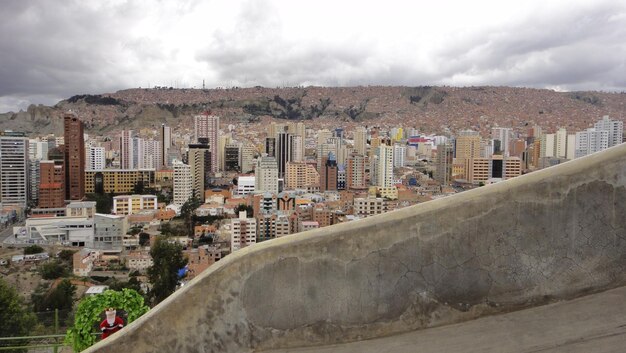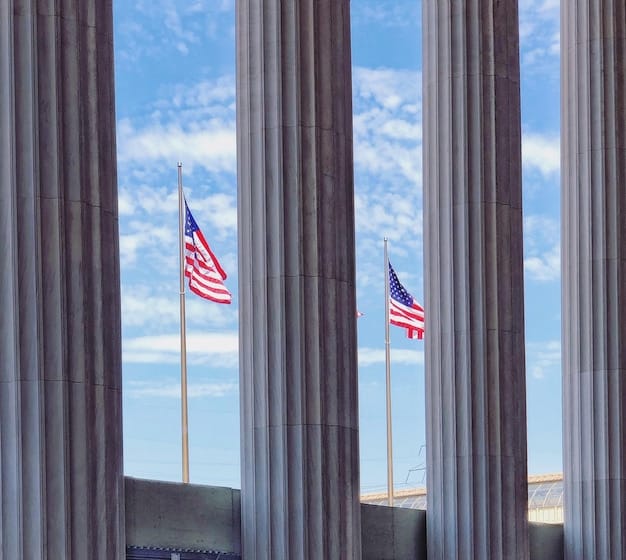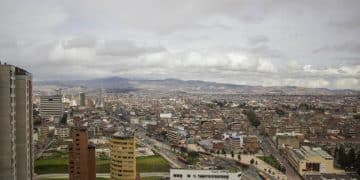How Peru’s New IP Laws Impact US Copyright Holders

Peru’s updated intellectual property laws are poised to significantly affect US copyright holders, potentially altering enforcement mechanisms, scope of protection, and avenues for redress in cases of infringement.
The realm of intellectual property rights is constantly evolving, especially in a globalized world where collaborations and exchanges transcend borders. Recent updates to Peru’s intellectual property (IP) laws are generating significant interest, particularly concerning their ramifications for US copyright holders. Understanding How Will Peru’s Updated Intellectual Property Laws Affect US Copyright Holders? is crucial for anyone engaged in creative endeavors and business within or linked to Peru.
Understanding the Landscape of Peruvian Intellectual Property Law
To effectively navigate the implications of Peru’s updated IP laws, an understanding of the overall landscape of Peruvian intellectual property law is essential. This includes knowing the key governing bodies, the types of IP rights protected, and how these rights are typically enforced within the country.
Key Governing Bodies for IP in Peru
The primary body responsible for intellectual property in Peru is the National Institute for the Defense of Competition and Protection of Intellectual Property (Indecopi). Indecopi handles the registration, administration, and enforcement of IP rights, making it a crucial entity for US copyright holders to be aware of. Its decisions and administrative actions have a direct impact on how IP rights are treated in the country.
Types of IP Rights Protected Under Peruvian Law
Peruvian law protects a variety of intellectual property rights, including:
- Copyright: Covering literary, artistic, and musical works.
- Trademarks: Protecting brand names and logos.
- Patents: Covering technological inventions.
- Industrial Designs: Protecting the aesthetic appearance of products.

The specific protections and enforcement mechanisms can vary, making it essential to understand the nuances related specifically to copyright.
In conclusion, a solid understanding of Peru’s IP framework, including Indecopi’s role and the types of IP rights protected, is crucial for US copyright holders preparing to deal with the updated laws. This forms the basis for navigating the complexities and opportunities that the new regulations may bring.
Key Changes in Peru’s Updated Intellectual Property Laws
Peru’s recent updates to its intellectual property laws bring several key adjustments that are important to note, and may significantly affect US copyright holders doing business there. These adjustments touch on aspects of enforcement, the scope of copyright protection, and more.
Enhanced Enforcement Mechanisms
One notable change is the strengthening of enforcement mechanisms. Indecopi has been given greater power to take action against copyright infringers, including the ability to conduct raids, seize infringing goods, and impose sanctions. This is a positive development for copyright holders as it provides quicker and more effective remedies against IP violations. The updated laws aim to streamline the process, making it easier for rights holders to protect their interests.
Adjustments to the Scope of Copyright Protection
The updated laws also include adjustments to the scope of copyright protection. These adjustments clarify the types of works that are eligible for copyright protection, as well as the rights afforded to copyright holders. For instance, there may be new provisions addressing digital rights, such as the protection of online content and measures to combat digital piracy. Understanding these specific changes is essential for copyright holders to ensure their work is adequately protected.
Changes to Digital Rights and Online Piracy
Addressing digital rights and online piracy is another critical component of the updated laws. With the rise of digital content consumption, Peru has sought to modernize its regulations to tackle online infringement more effectively. This includes provisions for:
- Site blocking: Allowing Indecopi to order internet service providers to block access to websites that host infringing content.
- Take-down notices: Streamlining the process for copyright holders to request the removal of infringing content from online platforms.
- Liability of online platforms: Clarifying the responsibilities of online platforms in preventing and addressing copyright infringement.
These changes collectively aim to bring Peruvian IP law more in line with international standards, enhancing the overall protection available to US copyright holders operating in Peru. By focusing on enforcement, scope, and digital rights, the updated laws seek to address the modern challenges of IP protection in the digital age. These adaptations are essential for US copyright holders to understand as they navigate the Peruvian market, ensuring their interests are safeguarded under the new legal framework.
How These Changes Directly Affect US Copyright Holders
Understanding the specific ways Peru’s updated intellectual property laws affect US copyright holders is more than just academic—it’s crucial for anyone who does business in or links to Peru. These changes directly influence issues like enforcement, scope of protection, and remedies against infringement.
Enforcement of US Copyrights in Peru
The most immediate effect of these changes is on the enforcement of US copyrights in Peru. With stronger enforcement mechanisms now in place, US copyright holders may find it easier to pursue legal action against infringers. Indecopi’s bolstered powers mean that cases of copyright infringement can be addressed more swiftly and effectively. This improvement encourages US entities to protect their IP rights in Peru.
Scope of Protection for US Works Under Peruvian Law
The revised scope of copyright protection also has significant implications. By clarifying what types of works are eligible for protection, the updated laws provide a clearer framework for US copyright holders. This clarity helps in several ways:
- Better understanding of eligible works: Clarifies which types of US copyrighted materials are enforceable in Peru.
- Facilitates licensing and distribution: Makes it easier for US copyright holders to license their works in Peru with greater assurances.
- Reduces ambiguity: Lessens the likelihood of disputes over the extent of copyright protection.
Remedies for Copyright Infringement Available to US Entities
Another aspect of these updates includes the remedies available to US entities when their copyrights are infringed. Under an evolved system, US copyright holders may have access to a broader range of remedies, including:
- Monetary damages: Compensation for losses incurred due to infringement.
- Injunctions: Court orders preventing further infringement.
- Seizure of infringing goods: Confiscation of products that violate copyright laws.

All these changes signal that Peru is serious about protecting intellectual property rights, which should be seen optimistically by US copyright holders. By keeping current with these legal advances, these copyright holders can more confidently and successfully conduct business in Peru, knowing their valuable creations are better safeguarded under the law.
Practical Steps for US Copyright Holders
Now that there’s a backdrop of Peru’s upgraded intellectual property laws, it’s time to talk practical steps. US copyright holders need to consider several actions to ensure their rights are protected under these new regulations. This includes registering copyrights in Peru, monitoring for infringement, and understanding legal options.
Registering Copyrights in Peru
One of the first and most important steps for US copyright holders is to register their copyrights in Peru. While the Berne Convention offers some protection to foreign works, registering your copyright in Peru provides additional legal benefits, including strengthening your ability to enforce your rights in local courts. The registration process involves submitting the necessary documentation and paying the required fees to Indecopi. It’s an investment that can pay off significantly in the event of infringement.
Monitoring for Infringement in the Peruvian Market
Regular monitoring for copyright infringement in the Peruvian market can help detect and address issues early. This includes:
- Online monitoring: Use tools to scan the internet for unauthorized copies of your work.
- Market surveillance: Keep an eye on the physical market for counterfeit goods.
- Engaging local partners: Collaborate with local distributors or agents who can help monitor the market.
Understanding Legal Options and Working with Local Counsel
Understanding the legal options available under Peruvian law is crucial for copyright holders. When infringement occurs, US copyright holders should be prepared to take appropriate legal action and should also strongly contemplate:
- Cease and desist letters: Sending formal notices to infringers demanding they stop their infringing activities.
- Administrative actions: Filing complaints with Indecopi to request enforcement actions.
- Litigation: Pursuing court cases to obtain damages and injunctions.
To navigate the complex world of Peruvian IP law, it’s advisable to work with experienced local counsel. Local attorneys can provide valuable guidance on legal procedures, enforcement strategies, and cultural nuances that can affect the outcome of a case. They can also represent your interests in dealings with Indecopi and the Peruvian courts. By taking these practical steps—registering copyrights, monitoring for infringement, and understanding legal options—US copyright holders can proactively protect their intellectual property rights in Peru and maximize the benefits of the updated laws.
Potential Challenges and How to Overcome Them
While Peru’s updated intellectual property laws provide enhanced protections for US copyright holders, some potential challenges may still arise. These can include dealing with bureaucratic processes, cultural attitudes towards copyright, and the cost of enforcement. Preparing for these challenges and having strategies to overcome them can smooth the way.
Navigating Bureaucratic Processes
One of the common challenges in any legal environment is navigating bureaucratic processes, and Peru is no exception. The best ways to proceed in this sphere might include:
- Thorough preparation: Ensure all documentation is complete and accurate before filing any claims.
- Engaging experts: Work with legal professionals who are familiar with the local procedures.
- Being patient: Understand that these processes can take time, and persistence is key.
Addressing Cultural Attitudes Toward Copyright
Cultural attitudes toward copyright and intellectual property can also impact enforcement efforts. In some regions or communities, there may be a lack of awareness or appreciation for IP rights, leading to widespread infringement, however:
- Education and awareness: Support initiatives aimed at educating the public about the importance of respecting copyright.
- Cultural sensitivity: Tailor enforcement strategies to be culturally appropriate and respectful.
- Collaboration: Work with local communities to foster a culture of compliance with IP laws.
Managing the Costs of Enforcement
The costs associated with enforcing copyright can be significant, including legal fees, investigation expenses, and other related costs. To manage these expenses effectively:
- Prioritization: Focus enforcement efforts on the most significant infringements.
- Cost-effective strategies: Explore alternative dispute resolution methods, such as mediation, to reduce legal costs.
- Insurance: Consider obtaining IP insurance to cover potential legal expenses.
The Future of US-Peru Copyright Relations
Looking ahead, the future of US-Peru copyright relations appears promising, especially that Peru’s copyright laws have taken a step closer to international standards. Ongoing collaboration and dialogue could help navigate the nuances that exist within this region ensuring that the alliance of US-Peru copyright relations is both robust and mutually beneficial.
Opportunities for Collaboration and Growth
Strengthened IP protections can lead to enhanced opportunities for collaboration between the US and Peru. These potential collaborations might include:
- Joint Ventures: Encouraging US companies to invest in Peruvian creative industries, fostering growth and innovation.
- Cultural Exchange: Promoting the exchange of artistic works, enriching both cultures, and supporting local artists.
- Technology Transfer: Facilitating the transfer of technology and expertise to help develop Peru’s IP ecosystem.
Impact on Trade and Investment
Strong IP laws will directly lead to increased trade and investment between the US and Peru by:
- Attracting Investment: Creating a more attractive environment for US investors seeking to protect their IP assets in Peru.
- Promoting Trade: Facilitating the trade of copyrighted works, such as books, music, and software, between the two countries.
- Boosting Innovation: Stimulating local innovation by assuring Peruvian creators that their works will be protected.
| Key Point | Brief Description |
|---|---|
| 🛡️ Enforcement | Peru has enhanced its IP laws, bolstering its action against copyright infringers and sanction capabilities. |
| 📝 Registration | Registering copyrights offers additional legal benefits, like stronger enforcement in local courts. |
| 🌐 Digital Rights Efforts | Peru is aiming to tackle online infringement more effectively including efforts such as site blocking and take-down notices. |
| 🤝 Collaboration | Lookout for the many ways you could partner and participate in the collaborative economic growth due to these changes. |
Frequently Asked Questions (FAQ)
▼
Indecopi, the National Institute for the Defense of Competition and Protection of Intellectual Property, is responsible for the registration, administration, and enforcement of IP rights in Peru.
▼
Registering provides additional legal benefits, strengthening your ability to enforce your rights in local courts. It ensures your work is formally recognized and protected under Peruvian law.
▼
The updated laws include provisions for site blocking, take-down notices, and clarifying the responsibilities of online platforms in preventing and addressing copyright infringement.
▼
US copyright holders may access monetary damages, injunctions to prevent further infringement, and the seizure of goods when their copyrights are violated in Peru.
▼
Challenges include bureaucratic processes, cultural attitudes towards copyright, and enforcement costs. Strategies include thorough preparation, cultural sensitivity, and cost-effective mechanisms.
Conclusion
In conclusion, Peru’s updated intellectual property laws represent a significant step forward in protecting the rights of US copyright holders. By understanding these changes, taking proactive steps to register and monitor copyrights, and addressing potential challenges, US entities can confidently navigate the Peruvian market and leverage their creative works for growth and success.





